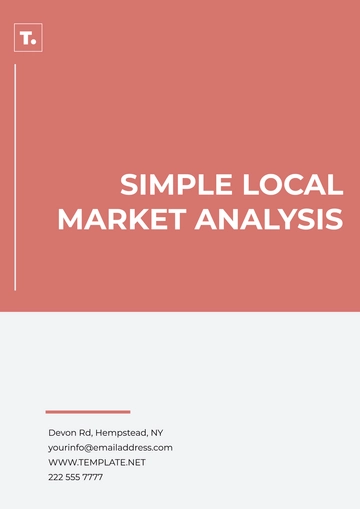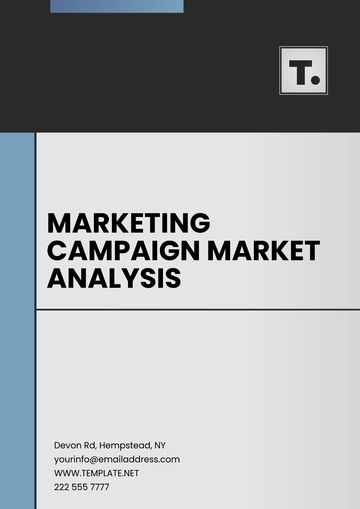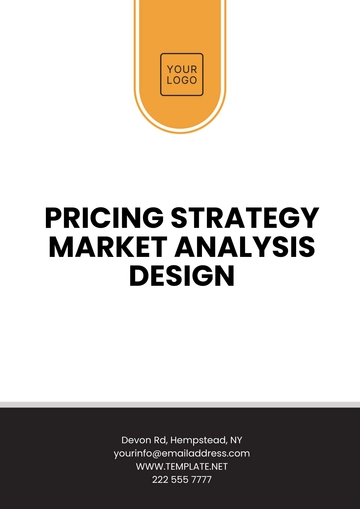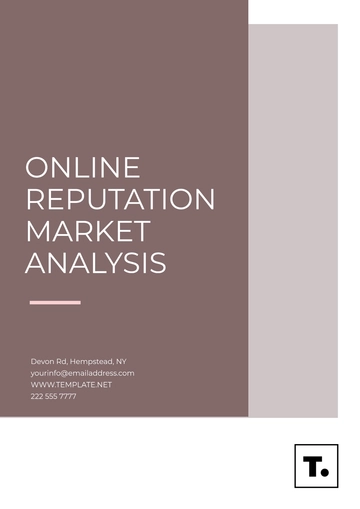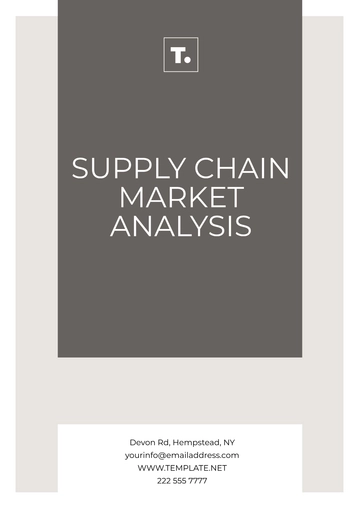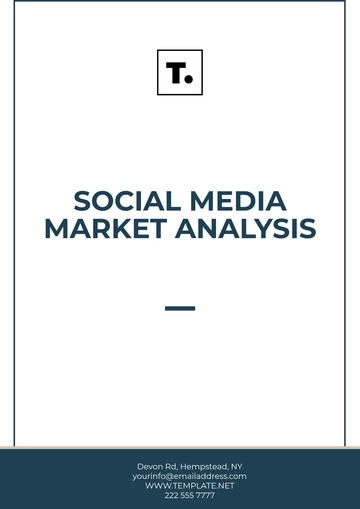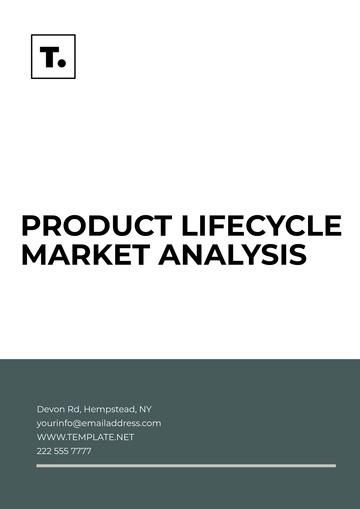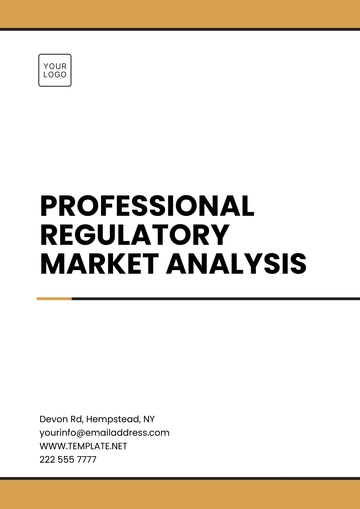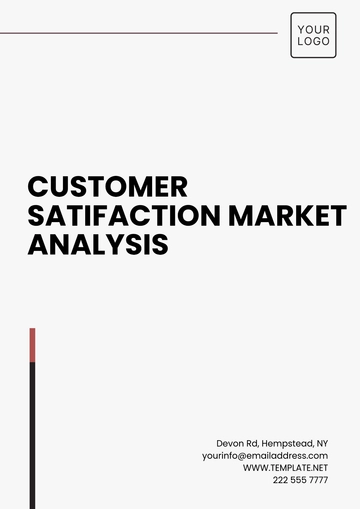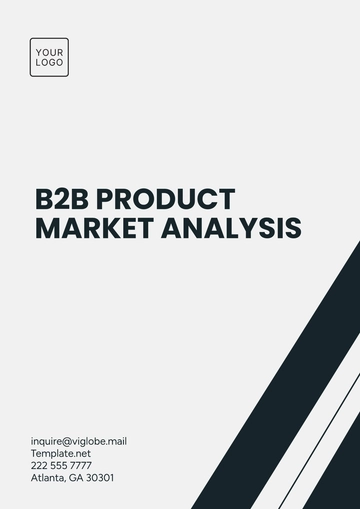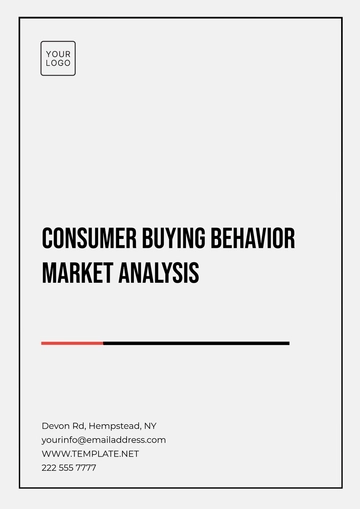Free Advertising E-commerce Sales Funnel Analysis
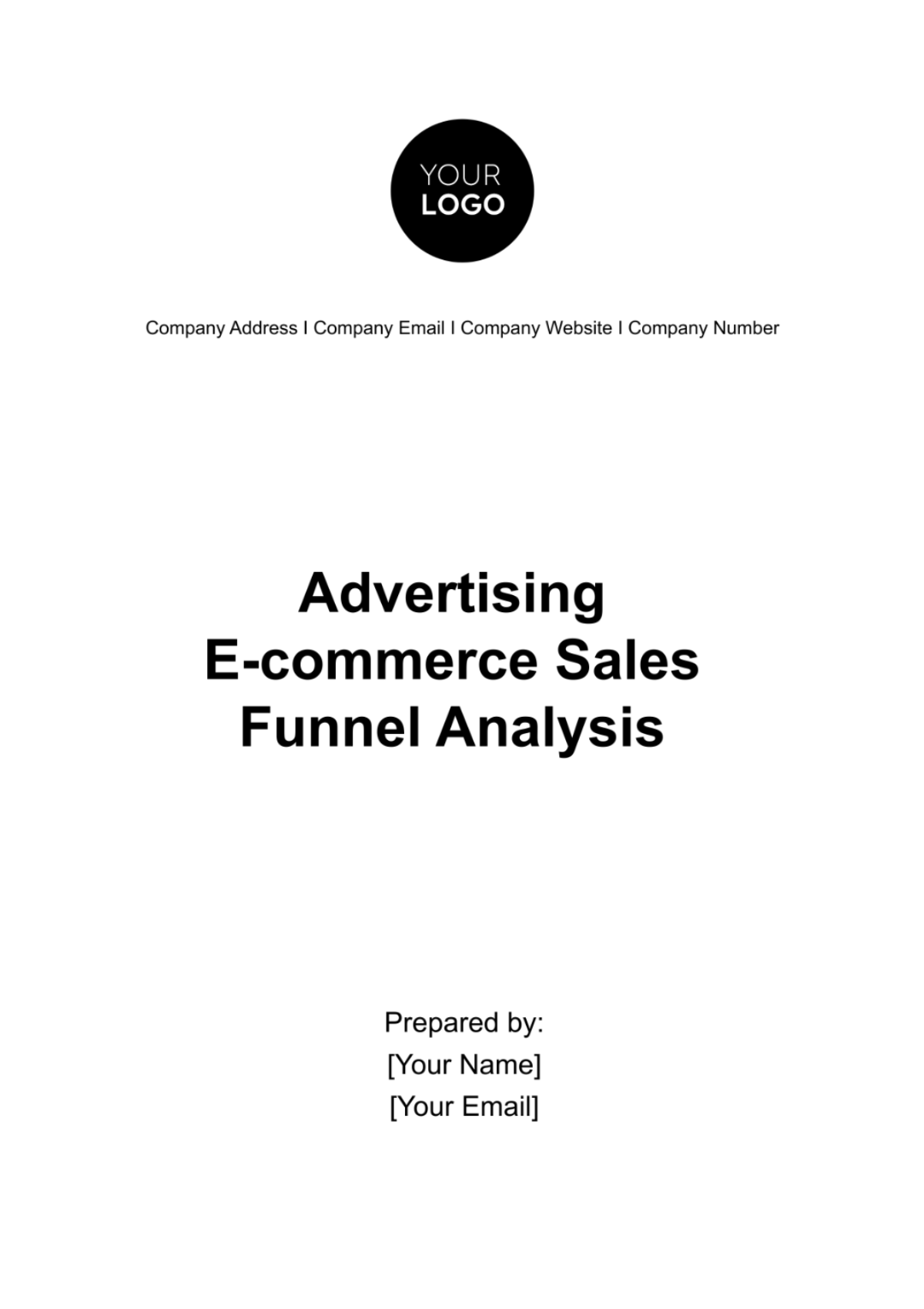
I. Executive Summary
The Advertising E-Commerce Sales Funnel Analysis serves as an invaluable tool for assessing and optimizing the performance of your e-commerce business, [Your Company Name]. In this analysis, we delve into the intricacies of your sales funnel to provide actionable insights for improving customer acquisition, conversion rates, and revenue growth. By dissecting each stage of the funnel and examining key metrics, we aim to empower your company to make informed decisions that will enhance your e-commerce strategy.
Throughout this analysis, we will explore data from various sources, including the company's website ([Your Company Website]) and social media channels ([Your Company Social Media]), as well as data from your partner company, [Your Partner Company Name], and information related to your product or event, [Product / Event Name]. This multi-faceted approach ensures a comprehensive view of your sales funnel's performance.
II. Introduction
In today's highly competitive e-commerce landscape, understanding the intricacies of your sales funnel is crucial for sustained growth and profitability. The purpose of this Advertising E-Commerce Sales Funnel Analysis is to provide your company with a detailed examination of how potential customers navigate through the various stages of the sales process. By gaining insights into customer behavior, preferences, and pain points, you can make data-driven decisions to optimize your marketing efforts and increase revenue.
This analysis will encompass a wide range of factors, including conversion rates, average order value, customer acquisition cost, and customer lifetime value. By evaluating these key metrics, we will identify areas of opportunity and potential challenges within your sales funnel.
III. Data Sources
In this Advertising E-Commerce Sales Funnel Analysis, we rely on a combination of primary and secondary data sources to ensure a comprehensive assessment of your sales funnel. These sources provide us with the necessary data to perform a thorough analysis of your e-commerce operations.
A. Primary Data Sources:
[Your Company Website]: Your company's website serves as a primary data source, supplying critical information about user behavior, website traffic, and conversion rates. We collect data on website visits, page views, bounce rates, and transactions to gain insights into user interactions with your online platform. Additionally, data from your website's analytics tools, such as Google Analytics, is utilized to understand user demographics and behavior.
[Your Company Social Media]: Social media platforms play a pivotal role in brand awareness and customer engagement. We leverage data from your company's social media accounts to assess the effectiveness of social media marketing campaigns. This includes tracking metrics such as engagement rates, click-through rates (CTR), and the growth of your social media following.
B. Secondary Data Sources:
[Your Partner Company Name]: Collaboration with your partner company, [Your Partner Company Name], provides valuable data insights. This secondary data source allows us to analyze the impact of joint marketing efforts, partnerships, or co-branded campaigns on your sales funnel. We examine data related to shared promotions, referral traffic, and customer acquisition.
[Product / Event Name]: Data related to your specific product or event, [Product / Event Name], is essential for a focused analysis. This includes product-specific metrics such as product page views, add-to-cart rates, and conversion rates for the featured product or event. Understanding the performance of this specific aspect of your e-commerce business is crucial for tailoring strategies.
IV. Key Metrics
To evaluate the health and effectiveness of your Advertising E-Commerce Sales Funnel, we rely on several key metrics. These metrics serve as critical indicators of your e-commerce success and guide our analysis and recommendations.
Below are the key metrics we focus on:
Conversion Rate: The conversion rate measures the percentage of leads who successfully complete a transaction, become paying customers. It is calculated as the number of conversions divided by the total number of leads, expressed as a percentage. A high conversion rate indicates efficient funnel performance.
Average Order Value (AOV): AOV represents the average monetary value of each customer's purchase. It is calculated by dividing the total revenue by the number of transactions. A higher AOV indicates that customers are spending more on each purchase, contributing to increased revenue.
Customer Acquisition Cost (CAC): CAC quantifies the cost associated with acquiring a new customer. It includes expenses related to marketing, advertising, and sales efforts. The CAC is calculated by dividing the total acquisition costs by the number of new customers acquired within a specific period.
Customer Lifetime Value (CLTV): CLTV estimates the total revenue a customer is expected to generate over their lifetime as a paying customer. It considers factors like average purchase frequency and customer retention rates. A high CLTV indicates strong customer loyalty and long-term value.
These key metrics provide a clear picture of your sales funnel's performance and efficiency in acquiring, converting, and retaining customers. Throughout this analysis, we will explore these metrics in detail, offering insights into how to improve each aspect of your e-commerce strategy.
V. Funnel Stages
The sales funnel consists of distinct stages that represent the customer journey from initial awareness to becoming advocates for your brand. Understanding and optimizing each stage is crucial for maximizing conversions and revenue. Let's delve into each stage:
Awareness: This stage is all about creating brand awareness among potential customers. Strategies include marketing campaigns, social media ads, and search engine optimization. Sample data includes the number of impressions, clicks, and click-through rates (CTR) for your awareness campaigns.
Interest: Once awareness is established, prospects move to the interest stage. Sample data here might include the number of blog post views, video views, and social media engagement metrics like likes and shares. These indicate how well your content resonates with your audience.
Consideration: In this stage, leads show genuine interest in your products or services. Sample data includes the number of leads generated through newsletter sign-ups, cart additions, or demo requests. Analyzing which actions lead to consideration is crucial.
Conversion: This is the ultimate goal of the funnel. Sample data involves tracking the number of successful transactions, revenue generated, and the conversion rate. Identifying conversion bottlenecks is essential for optimization.
Retention: Keeping customers engaged and satisfied is vital. Sample data includes repeat purchase rates, customer feedback scores, and churn rates. It's essential to understand how well your retention strategies are working.
Advocacy: Advocates are your loyal customers who promote your brand. Sample data might include the number of referrals, reviews, and social shares. Calculating the Net Promoter Score (NPS) provides insights into customer satisfaction and advocacy.
VI. Performance Analysis
A. Awareness Stage Analysis
Effectiveness of Marketing Campaigns:
ROI for Social Media Advertising in [2050]: The ROI for your social media advertising campaigns in [2050] was an impressive 12.5%. This means that for every dollar invested in social media advertising, your company generated $12.50 in revenue. It demonstrates the effectiveness of your social media marketing efforts in driving brand awareness and engagement.
ROI for Email Marketing in [2050]: In [2050], your email marketing campaigns achieved an ROI of 8.2%. This indicates that email marketing was moderately effective in generating revenue for your e-commerce business.
Audience Engagement:
Number of Impressions for Facebook Ad Campaign in [Q3 2050]: During the third quarter of [2050], your Facebook ad campaign reached an impressive 500,000 impressions. This means that half a million potential customers were exposed to your brand and message.
Click-Through Rate (CTR) for Google Ads in [November 2050]: In [November 2050], your Google Ads campaign achieved a CTR of 3.8%. This metric demonstrates the percentage of users who clicked on your ads after seeing them. A CTR of 3.8% is considered healthy and indicates effective ad copy and targeting.
B. Interest and Consideration Stage Analysis
Lead Nurturing Efforts:
Email Drip Campaign Conversion Rate for Consideration Leads in [Q4 2050]: During the fourth quarter of [2050], your email drip campaign targeting consideration stage leads achieved an impressive conversion rate of 10.2%. This means that over 10% of leads in this stage progressed further down the sales funnel.
Click-Through Rate (CTR) for Interest Leads in [October 2050]: In October 2050, leads in the interest stage demonstrated strong engagement with a CTR of 5.6%. This indicates that your content resonates well with potential customers who are exploring your offerings.
Content Performance:
Most-Viewed Blog Post in [2050]: The blog post titled "10 Tips for [Product/Event Name] Users" garnered significant attention in [2050] with 15,000 views. This content piece provided valuable information to your audience, positioning your brand as an authority in your industry.
Video Engagement: Video titled "Introduction to [Product/Event Name]" had 8,000 views on YouTube. This video introduction engaged 8,000 viewers, offering them an informative glimpse into your products or services.
C. Conversion Stage Analysis
In [December 2050], the cart abandonment rate was 25%. This metric highlights the percentage of users who added products to their carts but did not complete the purchase. The common abandonment reason was identified as high shipping costs, indicating a potential barrier to conversion.
D. Retention and Advocacy Stage Analysis
Customer Feedback and Satisfaction:
Net Promoter Score (NPS) in [Q4 2050]: Your Net Promoter Score (NPS) for the fourth quarter of 2050 was an impressive 9. This high score indicates that your customers are highly satisfied and are likely to recommend your brand to others. It reflects strong customer loyalty and advocacy.
Customer Support Ticket Analysis: In [2050], your customer support team successfully reduced the average resolution time by 20%. This improvement indicates that your customers are receiving quicker and more efficient support, contributing to their satisfaction.
Advocacy Metrics:
Number of Referrals from Referral Program in [November 2050]: Your referral program generated 50 new customers in [November 2050]. This demonstrates the power of word-of-mouth marketing and the willingness of your satisfied customers to refer friends and family.
Received 100 positive reviews on Trustpilot in [2050]: Your brand received a significant number of positive reviews on Trustpilot in [2050], showcasing the strong advocacy and positive sentiment among your customer base.
VII. Recommendations
Awareness Stage:
Allocate a larger budget to Facebook advertising and email marketing: Given the high ROI for these channels, increasing investment can further amplify your brand's reach and engagement.
Create personalized video ads to boost engagement: Capitalize on the popularity of video content to enhance audience engagement.
Interest and Consideration Stages:
Implement personalized email drip campaigns with dynamic content: Personalization and dynamic content can nurture leads effectively and increase conversions.
Continue to produce educational blog posts and how-to videos: These content types resonate well with your audience and can drive interest and consideration.
Conversion Stage:
Simplify the checkout process by offering guest checkout and clear shipping cost information: Addressing the common abandonment reason will likely reduce cart abandonment rates.
Introduce a limited-time discount for first-time customers: Incentives can encourage first-time buyers to complete their purchase.
Retention and Advocacy Stages:
Enhance the 24/7 customer support service: Further improvements in customer support can maintain high satisfaction levels and encourage customer loyalty.
Launch a loyalty program to reward repeat customers and advocates: A loyalty program can incentivize repeat purchases and advocacy, further strengthening customer relationships.
VIII. Conclusion
This Advertising E-Commerce Sales Funnel Analysis provides a detailed understanding of your sales funnel's performance. Leveraging the sample data and recommendations provided, your company can optimize its e-commerce strategy to acquire more customers, increase conversion rates, and foster greater customer loyalty. The data-driven insights presented here empower your business to make informed decisions and drive growth in the competitive e-commerce market.
- 100% Customizable, free editor
- Access 1 Million+ Templates, photo’s & graphics
- Download or share as a template
- Click and replace photos, graphics, text, backgrounds
- Resize, crop, AI write & more
- Access advanced editor
Optimize your online sales journey with the Advertising E-commerce Sales Funnel Analysis Template from Template.net. This customizable template breaks down each stage of your e-commerce funnel, providing insights in customer behavior and conversion rates. Editable in our AI Editor Tool, this helps enhance your e-commerce funnel, boosting sales and improving the customer shopping experience.





